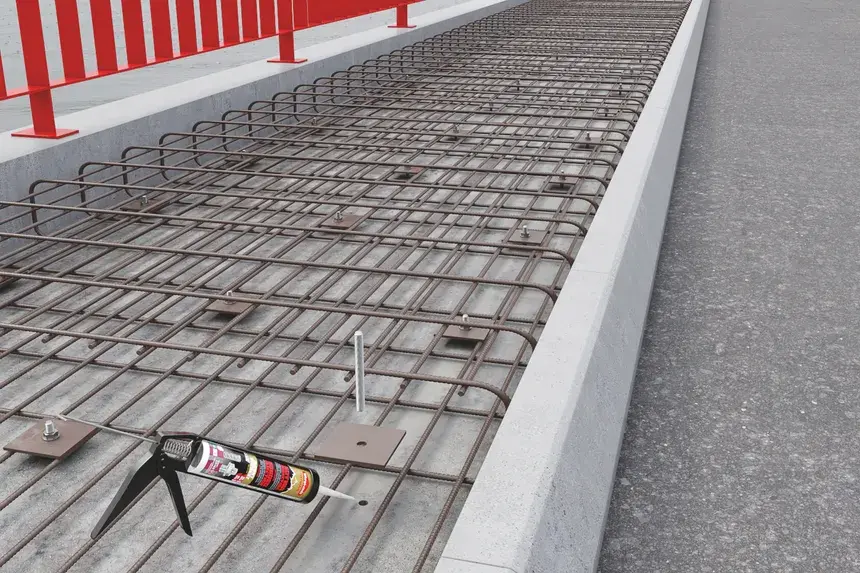
Chemical anchoring is a high-strength bonding technique used to secure rebars, anchor bolts, and structural supports into concrete. This method is stronger and more reliable than traditional mechanical anchoring, making it ideal for load-bearing structures, seismic retrofitting, and heavy equipment installations.
Chemical anchoring uses resin-based adhesives that provide superior bonding strength, ensuring that embedded reinforcements stay securely fixed, even under extreme loads and vibrations.
✔ Structural Retrofitting & Strengthening – Enhances load-bearing capacity.
✔ Machinery & Equipment Anchoring – Secures industrial machines to the floor.
✔ Bridges, Dams & Highways – Reinforces infrastructure against dynamic loads.
✔ High-Rise Construction – Ensures strong foundation anchoring.
1️⃣ Drilling Anchor Holes – Precision drilling to the required depth.
2️⃣ Cleaning the Holes – Removing dust for better adhesion.
3️⃣ Injecting Chemical Adhesive – Filling the hole with a high-bond resin.
4️⃣ Inserting the Anchor Rod/Rebar – Positioning the anchor and allowing it to set.
5️⃣ Final Load Testing – Ensuring structural stability.
✅ Superior Load Capacity – Provides better strength than mechanical anchoring.
✅ Fast Curing & High Bond Strength – Reduces project downtime.
✅ Corrosion & Vibration Resistant – Ideal for long-term applications.
✅ Works in Wet or Damp Conditions – Excellent adhesion in any environment.





